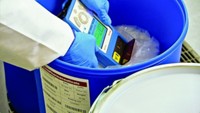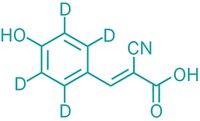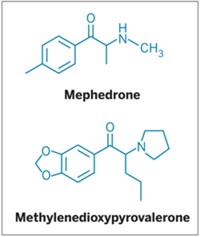Advertisement
Grab your lab coat. Let's get started
Welcome!
Welcome!
Create an account below to get 6 C&EN articles per month, receive newsletters and more - all free.
It seems this is your first time logging in online. Please enter the following information to continue.
As an ACS member you automatically get access to this site. All we need is few more details to create your reading experience.
Not you? Sign in with a different account.
Not you? Sign in with a different account.
ERROR 1
ERROR 1
ERROR 2
ERROR 2
ERROR 2
ERROR 2
ERROR 2
Password and Confirm password must match.
If you have an ACS member number, please enter it here so we can link this account to your membership. (optional)
ERROR 2
ACS values your privacy. By submitting your information, you are gaining access to C&EN and subscribing to our weekly newsletter. We use the information you provide to make your reading experience better, and we will never sell your data to third party members.
Analytical Chemistry
Finding Fake Antimalarial Drugs Without Breaking Open The Packaging
Forensics: Nuclear quadrupole resonance spectroscopy could help people in the developing world spot fake drugs
by Katharine Sanderson
February 18, 2013

In the developing world, drug counterfeiters produce and sell antimalarial drugs that come in the same packaging as and look like drugs made by pharmaceutical companies. But these fake pills may contain too low a dose of the active compounds or lack them completely. A spectroscopic technique can spot counterfeit drugs with improper amounts of active ingredient even when the pills are still in their packaging, reports a team of researchers from the UK (Anal. Chem., DOI: 10.1021/ac303267v).
The team, led by Jamie Barras from King’s College London, used a technique related to nuclear magnetic resonance spectroscopy called nuclear quadrupole resonance (NQR) spectroscopy. The technique fires radio waves at solid samples, exciting so-called quadrupole nuclei, such as those of nitrogen-14 atoms. When these nuclei relax, they emit radio wave signals characteristic of their surrounding environment, which researchers can use to identify compounds.
A selling point for the method, says Barras, is that the radio waves can penetrate paper and cardboard, so an inspector or doctor wouldn’t have to break open a drug’s packaging to analyze it.
Barras and his colleagues used NQR to analyze authentic and fake tablets of the antimalarial drug Metakelfin. They received the counterfeit tablets from a television documentary crew that had been working on a story about fake drugs in Tanzania.
The team slid packets of the authentic and fake tablets into their spectrometer and recorded NQR spectra. The NQR method is quantitative, because the strength and duration of the emitted signals depend on the number of nuclei in the sample. By comparing spectra of the fake and authentic samples, Barras determined that the counterfeit drugs had only 43% of the amount of sulfalene, one of Metakelfin’s active ingredients, that the authentic tablets contained.
Barras hopes his team can apply NQR to other drugs and that the technique will eventually lead to an easy-to-use, portable counterfeit drug detector.





Join the conversation
Contact the reporter
Submit a Letter to the Editor for publication
Engage with us on Twitter